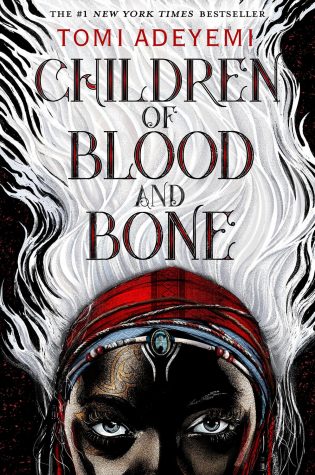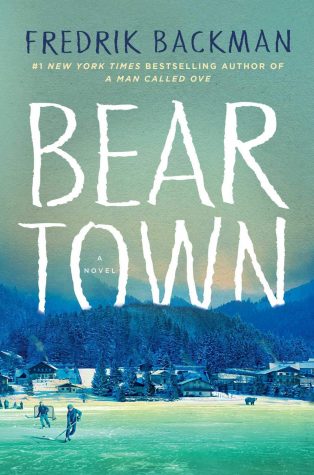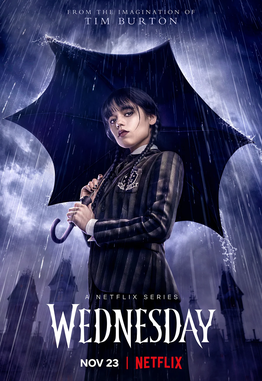The Foreword Book Club: October Reads
Bella Crum and Maya Shook take on the books Children of Blood and Bone and Beartown.
Children of Blood and Bone by Tomi Adeyemi
by Bella Crum

Thoughtfully crafted with influence from Tomi Adeyemi’s West African roots, her debut novel is an example of when a rich plot line blends with striking symbolism and complex, compelling characters. Her novel is a work of fiction in a world parallel to our own. Although it is very much like a work of dystopian literature, it seems more like a fairytale in the way that the story seems timeless, and driven by moral themes. Besides, dystopian novels are so 1984. The reader is hurtled into a world ravaged with war and poverty, devoid of the magic that once coursed through the kingdom of Orisha. Although at first glance this overview seems quite tacky and juvenile, this couldn’t be farther from the truth. Any fantastical elements in her novel are necessary to help shape a world that is a reflection of our own, but not make this metaphor too obvious. Needless to say, if her second novel in the series—Children of Virtue and Vengeance—is as well crafted as the first, my weekend will be fully booked (pun intended) when it comes out on December 3, 2019.
The only major fault to be said about her work is that the plot moves pretty quickly; Adeyemi is no Charles Dickens. Children of Blood and Bone is without a doubt a book driven by action, and as a result it sacrifices detailed description to move the story along. Still, when an author crafts a story where the setting is a foreign concept to the reader, it is extremely necessary to include a complete, comprehensive description of the setting. That is not to say that her writing style is completely inadequate in that aspect. As mentioned previously, the setting is heavily influenced by West Africa, so it is not as if the reader is completely unaware of the author’s vision. It is merely that her novel lacks a certain clarification. For example, at one point in the book, (no major spoilers, I promise!) Zelie—the protagonist—visits a temple. It is a place of reverence and holiness, and it is important that Adeyemi can provide imagery to the reader so that they may experience it just as Zelie does. The point of that part in the book is that Zelie is in awe of her surroundings and the stories of her people that echo to her. It is difficult to truly comprehend this major inspiration in her when we cannot see what she sees.
Moreover, it is not difficult to find examples of compelling diction, which is a marker of any good writer. At some points, her language selection seems almost poetic. The internal dialogue of our protagonist, Zelie, is bursting with profound thought, which is executed perfectly. When I read, I like to highlight phrases that particularly resonate with me. An example might be when she remarks “ignorant of the impossibilities blowing all around us,” or alternatively “I lose myself in their beautiful chaos.” It might not seem very compelling to the reader without any context to decipher their meaning, but allow me to assure you that her diction is well selected, without sounding too pretentious. Her word selection is a perfect balance between a sort of sophisticated beauty, while still maintaining a friendly reading that level than any teen or young adult can easily enjoy.
To sum it up, I believe reading Children of Blood and Bone and diving into the beautifully crafted novel by Adeyemi is a novel idea. It isn’t tacky, and has the indescribable quality of the most ancient, profound fairytales. While being able to exude compelling themes of minority oppression, self acceptance, and the difficulties of finding love, it follows a gripping journey to be enjoyed by anyone.
Beartown by Frederik Blackman
by Maya Shook
Readers may recognize Fredrik Backman’s name from one of his other bestsellers, including A Man Called Ove—his wildly popular tale about a grumpy, yet endearing old man. In his ambitious 2016 release Beartown, Backman delves into slightly more serious subject matter, but still fills the pages with his signature clever insights.
I’ve read Beartown twice. The first time I tore through it in about a day. The second time, I let if drag out a little longer, taking notes and extracting quotes. I gained a better appreciation for the way Backman sets up his story, finding more weight in his words once I knew how everything played out. I read Beartown for the second time because I was bored and didn’t have access to any other books, but really, a reread turned out to be the perfect test for this book: was it compelling because it promised shocking reveals or because it was actually well-written? I concluded the latter.
Beartown tells the story of a small forest town in Sweden on the brink of extinction. But somewhere in the midst of the chilling cold and crumbling economy is a glimmer of hope—the boy’s junior hockey team. Beartown is a proud town, a quiet town, and, above all else, it’s a hockey town. A win at the national semifinals could bring about the national recognition and economic opportunities Beartown residents so desperately want. Seemingly, the fate of the town rests on the shoulders of a group of teenage boys. But when a horrible event occurs after the big game, the town begins to unravel at its seams. Through the eyes of practically the entire town, Backman explores numerous questions, but most importantly: what is the true cost of our silence?

If you’re like me and know nothing about hockey, don’t fret! The book is not really about the game itself, but everything that it represents. It’s about the players, their families, coaches, fans, and the ostracization of those who stay out of the hockey world. It’s about friendship, loyalty, and what it means to be on a team. It about the culture, the values instilled upon these children from a young age, and what happens when a locker room joke goes just a bit too far. It’s about what brings people together, but also what tears them apart.
Now, the plot itself is nothing unheard of, but where Backman really shines is with his characterization and writing style. He takes on the impossible task of exploring a large cast of majors character, but still does each one justice. He spends more time developing some characters, while others fade into the background and serve as vehicles to build the tone and atmosphere. Some characters don’t even have names, which allows Backman to examine the importance of a name to a person’s identity, and question how the titles we give others play a role in their characterization and what it means for them to take ownership of their own narrative. So many perspectives, themes, and subplots should not be able to fit comfortably inside 415 pages, but it works.
What allows Backman to successfully handle such a large cast of characters is the authority he exercises over his story. Every scene, conversation, vivid description, or witty remark feels deliberate and is perfectly curated for the moment. Backman strikes me as a pretty philosophical dude who likes to pack his late-night revelations into his novels. This poses a risk of sounding overly preachy, but despite the occasional cliche, he manages to sound wise, yet relevant.
Beartown is microcosm for any large city, yet the small town setting allows Backman to craft a nuanced town identify and explore it with intimate detail. The main attributes of Beartown—quiet, proud, and hockey-obsessed—are introduced from the beginning. However, their true meaning evolves along with the twists and turns of the story. The setting is effectively incorporated into the plot, almost as though it was a character too.
Beartown is one of those books that strikes a perfect balance between being a page-turner and still feeling meaningful. If you’re looking to get lost in the pages and find some insight, this is the book for you.


















